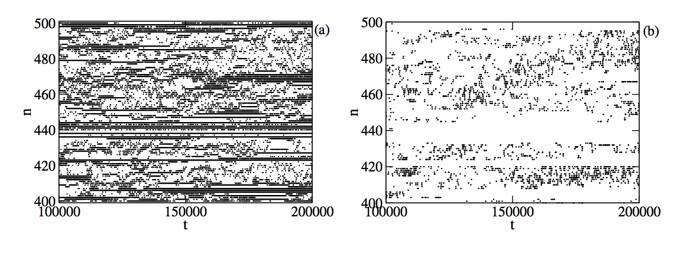Freezing upon heating: Formation of dynamical glass

The discovery of superconductivity and its experimental realization are two of the most important advancements in physics and engineering of the past century. Nevertheless, their statistical and dynamical characteristics have yet to be fully understood. A team of researchers at the Center for Theoretical Physics of Complex Systems, within the Institute for Basic Science (IBS, South Korea), has modeled the energy behavior of chaotic networks of superconducting elements (grains), separated by non-superconducting junctions, and discovered some unexpected statistical properties at long, but still finite time scales. Their findings are published in Physical Review Letters.
A number of pioneer discoveries in statistical mechanics arose from questioning the applicability of core abstract concepts to physical systems and experimental devices. A notable example is the ergodic hypothesis, which assumes that over time, a system visits almost every available microstate of the phase space, and that the infinite time average of any measurable quantity of the system matches with its phase space average. In short, this is the reason why ice melts in a pot of water. And it will do so faster if the water is hotter. Scientists have been figuring ways to verify the validity or the failure of the ergodic hypothesis based on finite-time measurements.
Led by Sergej Flach, the IBS researchers developed an efficient method to extract precise estimates of the time scales for ergodicity (coined ergodization time). This method has herewith been successfully applied to classical networks of superconducting grains weakly coupled by Josephson junctions.
The team found that in these networks, the ergodization time scale quickly becomes huge, although it remains finite, upon increasing the system temperature. Instead, the time scales necessary for chaoticity to develop remain practically unchanged with respect to the ergodization one. This is highly surprising, as ergodicity is inextricably knotted to chaos, and their respective time scales must be also strictly related. In terms of the ice, it means that the hotter the water gets, the longer it takes for the ice cubes to melt. IBS researchers numerically showed that higher temperature fluctuations strongly hinder their own meandering through the system. Thus, a slower and slower process drastically delays the ergodization of the system. The team has labeled this discovery "dynamical glass."
"Upon increasing the temperature, our studies unraveled the emergence of roaming chaotic spots among frozen and seemingly inert regions. The name dynamical glass follows from this very fragmentation, as the word 'dynamical' suggests the quick development of chaos, while the word 'glass' points at phenomena that require an extremely long but finite time scale to occur," explains Carlo Danieli, a member of the team.
The understanding of the mechanism and the necessary time scales for ergodicity and chaoticity to develop is at the very core of a huge number of recent advancements in condensed matter physics. The team expects this to pave the way to assess several unsolved issues in many body systems, from anomalous heat conductivity to thermalization.
The researchers also expect that the observed dynamical glass is a generic property of networks of superconducting grains via Josephson coupling irrespective of their space dimensionality. Furthermore, it is conjectured that a broad set of weakly non-integrable many-body systems turn into dynamical glasses as they approach specific temperature regimes. An equally charming and challenging task is the team's aspiration to demonstrate the existence of a dynamical glass in quantum many-body systems, and establish its connection with many-body localization phenomena.
Flach says, "We expect these findings open a new venue to assess and understand phenomena related to many-body localization and glassiness in a large number of weakly non-integrable many-body systems."
More information: Thudiyangal Mithun et al. Dynamical Glass and Ergodization Times in Classical Josephson Junction Chains, Physical Review Letters (2019). DOI: 10.1103/PhysRevLett.122.054102
Journal information: Physical Review Letters
Provided by Institute for Basic Science





















